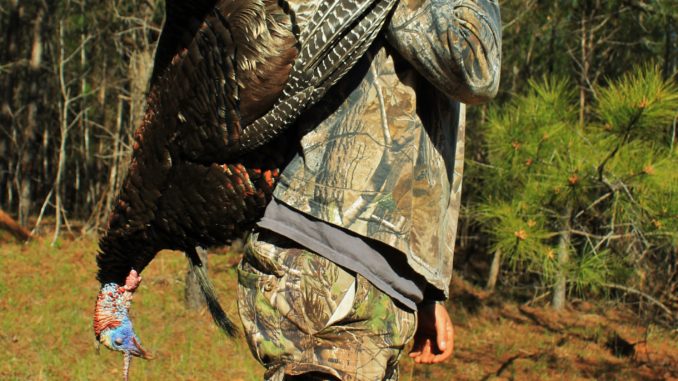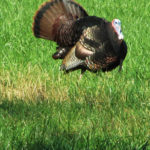
Gobblers that have heard a lot of calls don’t come running the first time you help. Here are some tips for putting the moves on a bird that’s been heavily hunted.
As the morning began to brighten, the sounds of a new day started to emerge. Crickets faded into chirps from chickadees. Courting frogs merged into the wakening call of the Carolina wren. Charles Hudson and I stood near a giant oak bordering a beaver swamp, listening, when a distant gobble got our attention.
We silently looked at one another, then another gobble echoed across the swamp. The turkey was roosted across the swamp, 500 to 600 yards to our north.
“Come on, we have some time, but we better not linger,” said Hudson as we made our way around to the edge of a field.
Nestled against a large white pine, Hudson, a Travelers Rest resident who has been hunting turkeys since South Carolina first opened a season back in the 1960s, pulled from his vest a small scratch box call he had made more than 30 years ago. As his hands began to work the call, I strained to hear the sound he was creating.
When I said, “I could barely hear what you were doing,” Hudson was quick to point out, “I wasn’t trying to call to you, I was calling to the turkey.”
The turkeys we were after had been hunted hard for weeks. Every local knew them and had all struggled to get these birds to work, and that explained Hudson’s quiet approach.
He is quick to point out that, “No one likes a loud, nagging woman, and turkeys are the same way…. Sometimes you can kill them by screaming at them, but after a while, the old birds understand what the gig is and just ignore the loud and obnoxious calling.”
When you’re dealing with pressured birds, Hudson said, a whisper gets more response than anything else. Soft and slow calling is the way to get birds into range.
In addition to soft calling, patience is also key. Many hunters run-and-gun for turkeys on public ground because of the competition, afraid that if they don’t get there first, someone else will kill the bird they are working. While this can and does happen, Hudson said more times than not, pressured toms will not gobble nearly as often and are quiet.
“Just because they are quiet doesn’t mean you cannot kill him,” he said.
That morning, we sat in the same place for more than 45 minutes with Hudson softly “whispering” on his scratch call. Long after I was ready to bail on the bird, the sound of a turkey flying caught my ear, and just then, the turkey landed on our side of the swamp, not 70 yards away. In 15 minutes, I was standing over a mature, old bird.
Patience is one of the elements that David Catoe of Lugoff employs when hunting pressured toms. He will often sit in the same place for hours, waiting for a gobbler to reveal his location.
“Many hunters give up around 10 o’clock in the morning, and on many occasions, my hunt is just beginning.” Catoe said, explaining that a tom that’s been pressured often gobbles on the roost and perhaps once after he hits the ground, then shuts up.
If you are set up in a good location, patience can and does eventually bring the bird to the gun.
“How many times have you heard a turkey gobble and wander off, then three hours later, he gobbles again in the same place he flew down?” Catoe said.
When these, old pressured toms walk away from him, and he knows he’s in a good area, Catoe will often just wait.
“It is not uncommon for me to sit right there for two or three hours waiting on him to get done with the early hens and come looking for the hen he heard at first light,” he said. “I may call softly every 20 or 30 minutes with a soft purr or cluck, and that’s it.”
Travis Crowley of Springfield, Mo., guides hunters all over the country, and he says one of his most-effective technique for pressured toms is to set up near their roosting area in early to mid-afternoon and wait for them to come back to the roost area.
“I like to set up within 20 to 30 yards from the roost trees. As the shadows grow, I will introduce a few soft purrs and clucks to make the gobblers think there are hens ahead of him ready to fly up,”he said, admitting that birds aren’t quick to gobble at calls in the afternoon, but they know where you are, and that might convince them to return to their roosting area a bit early.
Killing pressured toms is difficult and requires a lot of patience and subtle calling. But putting your tag around a mature, old tom that everyone else has not been able to kill is one of the more satisfying elements of turkey hunting.







Be the first to comment